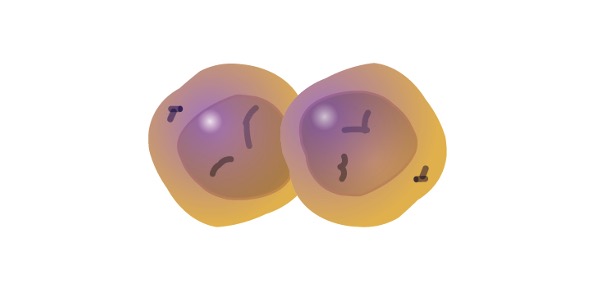Table of Contents
Photoautotrophs Definition
Photoautotrophs are creatures that can generate their own energy by photosynthesising light and carbon dioxide. The term photoautotroph is made up of the word autotroph, which refers to a creature that produces its own nourishment, and photo-, which means “light.”
Photoautotrophs include green plants and photosynthetic microorganisms. They are not to be confused with photoheterotrophs, which produce energy from light but cannot use carbon dioxide as their primary carbon source and must rely on organic molecules instead.
Photoautotrophs Function
Photoautotrophs are able to survive and reproduce by basically producing their own nourishment. They are, nevertheless, critical for the survival of heterotrophs, creatures that cannot produce their own food and must rely on other species for existence. Heterotrophs consume autotrophs, such as cattle, which graze grass and are subsequently eaten by humans.
Photoautotrophs and other autotrophs are at the bottom of the food chain, feeding other creatures and playing an important role in all ecosystems. Because they generate nutrients that all other creatures require to thrive, they are regarded as producers in the food chain.
Humans and other animals would not be able to exist without them since there would be no food. Photoautotrophs are especially essential because they consume carbon dioxide, which is produced as a consequence of heterotrophic respiration. Furthermore, phototrophs produce oxygen as a by-product of photosynthesis, and mammals require this oxygen to thrive.
Types of Photoautotrophs
i. Green Plants
With a few exceptions, such as Indian Pipe, nearly all plants are photoautotrophs (Monotropa uniflora). This category of green plants encompasses all types of plant life, including trees, mosses, and grasses. In terrestrial ecosystems, plants are essential food sources.
Because they synthesise the chemical chlorophyll in organelles called chloroplasts within their cells, they can generate their own energy from light. Chlorophyll collects light and transmits it to sections of the plant that can utilise it. It is also responsible for the green hue of plants.
Indian Pipe has lost its capacity to make chlorophyll, and as a result, it is unable to generate energy from light. Instead, it parasitizes and “steals” nutrients from specific tree and fungus species.
ii. Bacteria
Some bacteria, known as cyanobacteria or blue-green bacteria, are photoautotrophs (formerly called blue-green algae). Cyanobacteria, like plants, generate chlorophyll. Cyanobacteria, in fact, are responsible for the emergence of plants.
Cyanobacteria were carried up into cells millions of years ago, where they were able to generate food for those cells in exchange for a home to dwell. This indicates that plant cells’ chloroplasts are actually cyanobacteria. These chloroplasts are replicas of the cyanobacteria that invaded plant cells many years ago since cyanobacteria reproduce asexually.
Green sulphur bacteria are photoautotrophic bacteria that are ecologically similar to cyanobacteria, but they do not generate oxygen and utilise sulphide ions instead of water during photosynthesis.
iii. Algae
Algae can be single-celled or multicellular, and they come in a variety of shapes and sizes (seaweed is a type of algae). They are major producers in aquatic habitats, but they may also be found on land. Because not all algae originated from the same common ancestor, only certain algae species are photoautotrophs.
Algae, like other photoautotrophs, are major oxygen generators. Algae are responsible for almost half of the oxygen in the atmosphere. An algal bloom can disturb the environment by generating toxins and reducing the availability of nutrients if too much algae grows.
Algal blooms are frequently produced by human activities such as the use of nitrogen-based fertilisers and poor wastewater treatment. Algae, on the other hand, are excellent carbon dioxide consumers and could one day be used as a biofuel to replace fossil fuels.
Photoautotrophs vs Chemoautotrophs
Another form of autotroph is the chemoautotroph. They generate their own food, just like photoautotrophs, but they do it using chemical processes rather than light energy. Because of this, they can thrive in locations where there is no sunshine, like the deep ocean floor.
Nitrogen-fixing bacteria and iron-oxidizing bacteria are examples of chemoautotrophs. An organism that makes its own nourishment is known as an autotroph. Heterotrophs are creatures that are unable to create their own food and must rely on the consumption of other species in order to exist.
A photoheterotroph is an organism that generates energy from light but obtains its carbon from organic sources rather than inorganic carbon dioxide, like photoautotrophs do. Photosynthesis is the process through which photoautotrophs absorb light and transform it into chemical energy, which is then used to power their cells.
Photoautotrophs Citations
- Photoautotrophs-Bacteria Co-Cultures: Advances, Challenges and Applications. Materials (Basel) . 2021 Jun 2;14(11):3027.
- Evolution-Driven Versatility of N Terminal Acetylation in Photoautotrophs. Trends Plant Sci . 2021 Apr;26(4):375-391.
- Biogeography of photoautotrophs in the high polar biome. Front Plant Sci . 2015 Sep 11;6:692.







